Abstract
Rats and pigeons were trained on a series of reversals of a conditional simultaneous discrimination. The percentage of reinforcement for correct trials was varied across reversals. When nonreinforced correct trials produced the same feedback as incorrect trials, the number of errors to reach an acquisition criterion was greater for smaller percentages of reinforcement, but the number of reinforcers required was either approximately constant or smaller for the smaller percentages. When a stimulus paired with food (the conditioned reinforcer) was added on nonreinforced correct trials, both measures were substantially decreased. When the same stimulus was presented, but without a history of food pairing, learning rate was similar to when no stimulus was presented on nonreinforced trials. The results provide direct evidence that conditioned reinforcers may substitute, although imperfectly, for a primary reinforcer, and that pairing with the primary reinforcer is a necessary condition for such substitutability to occur.
Full text
PDF
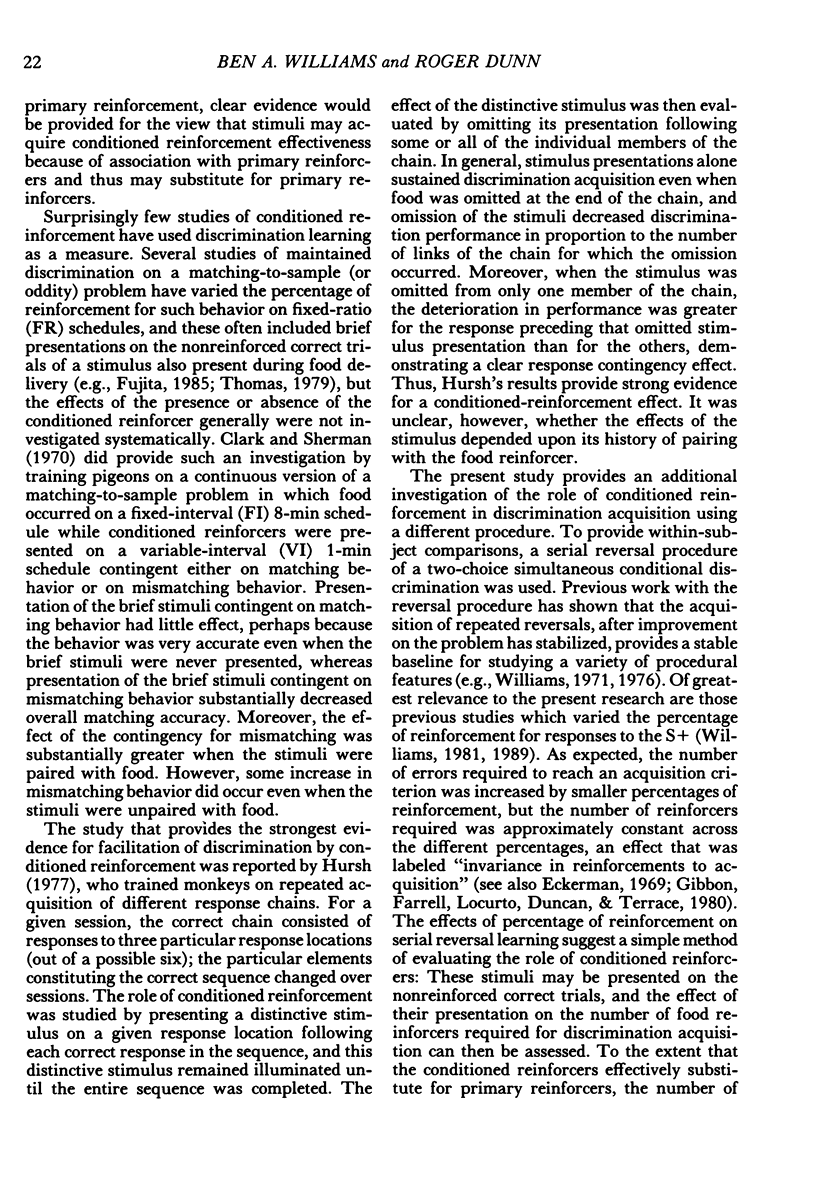
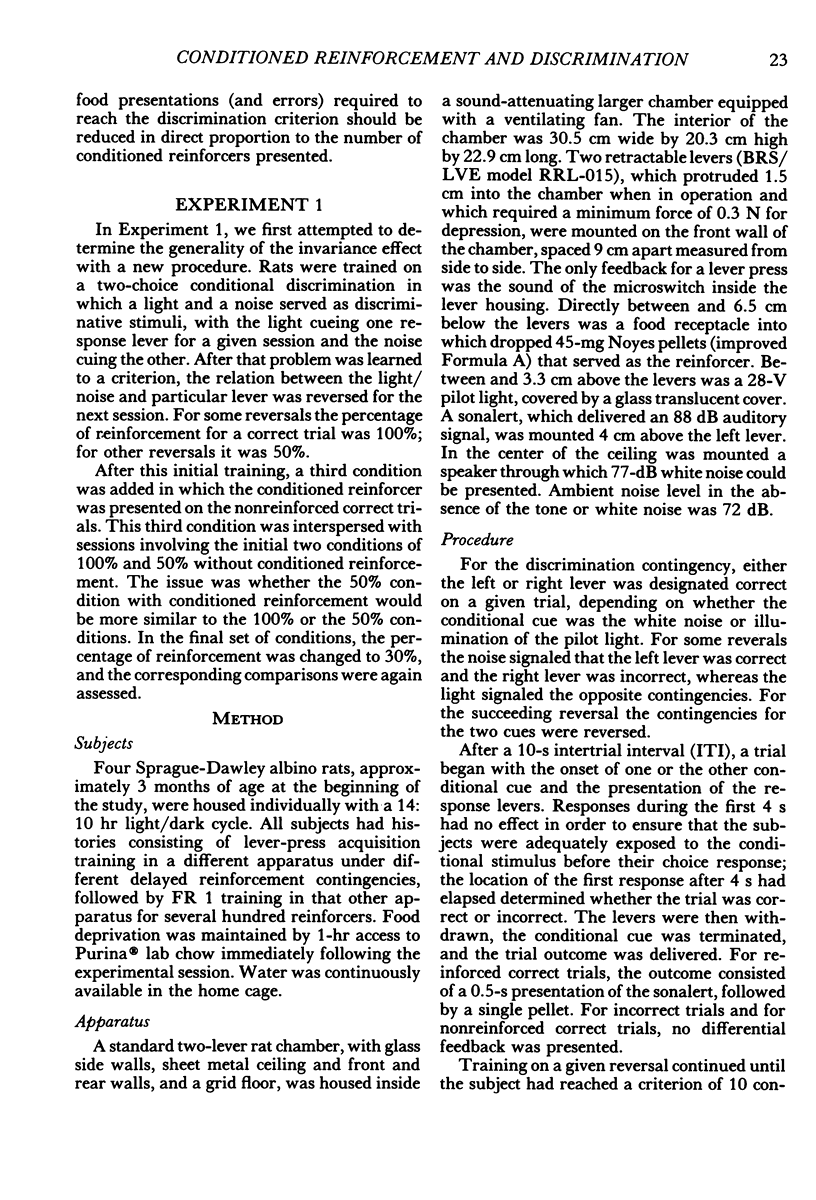


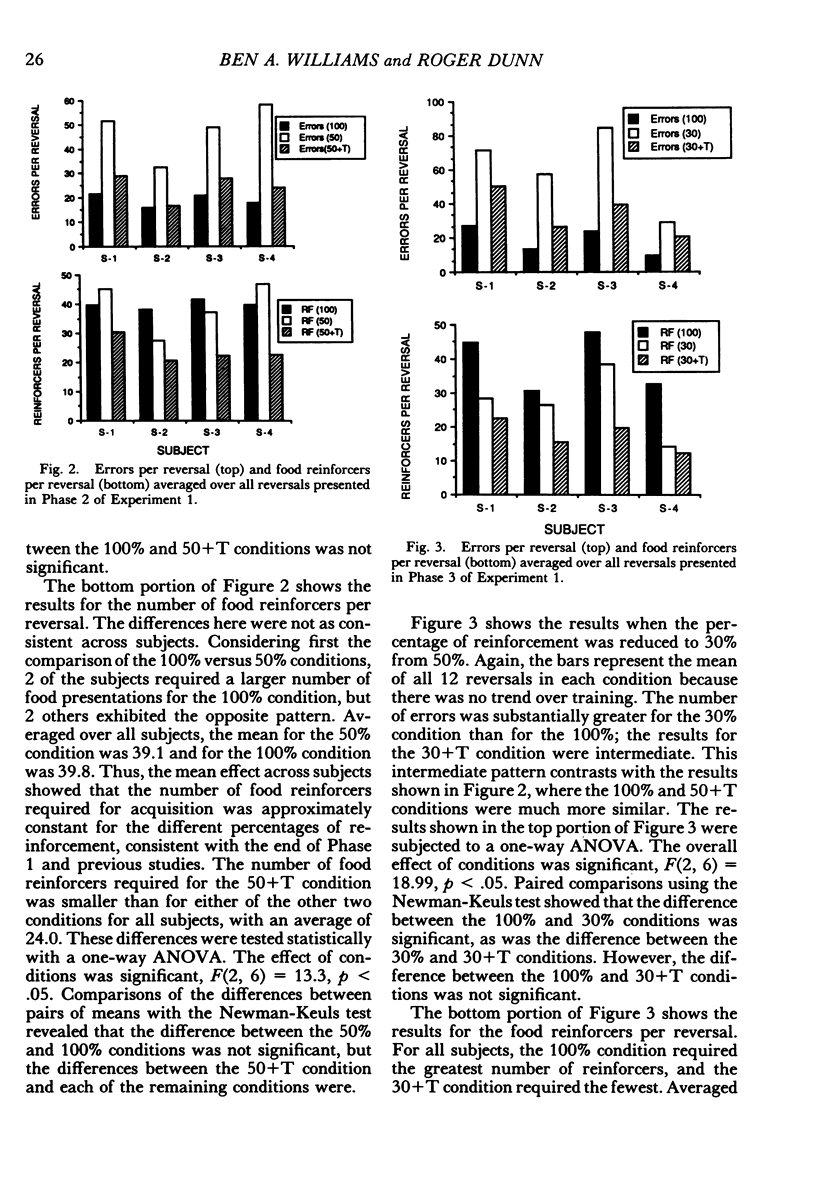
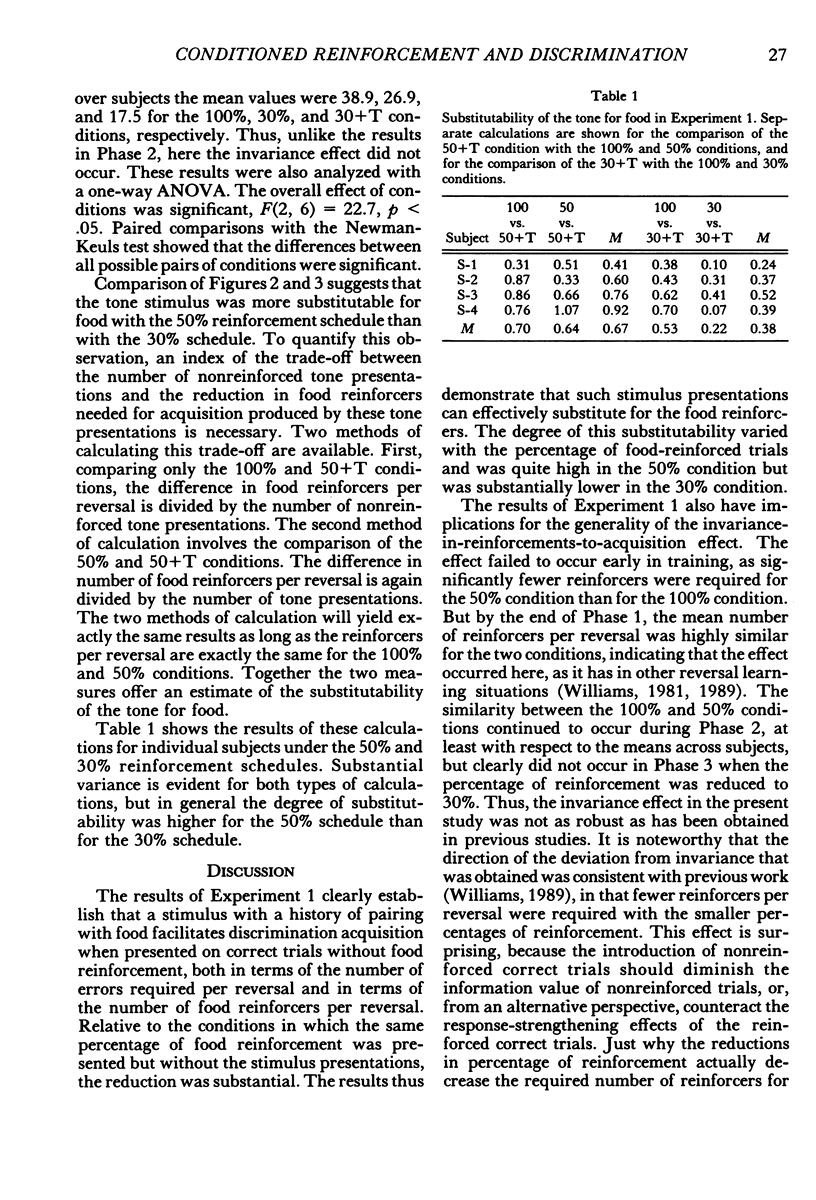
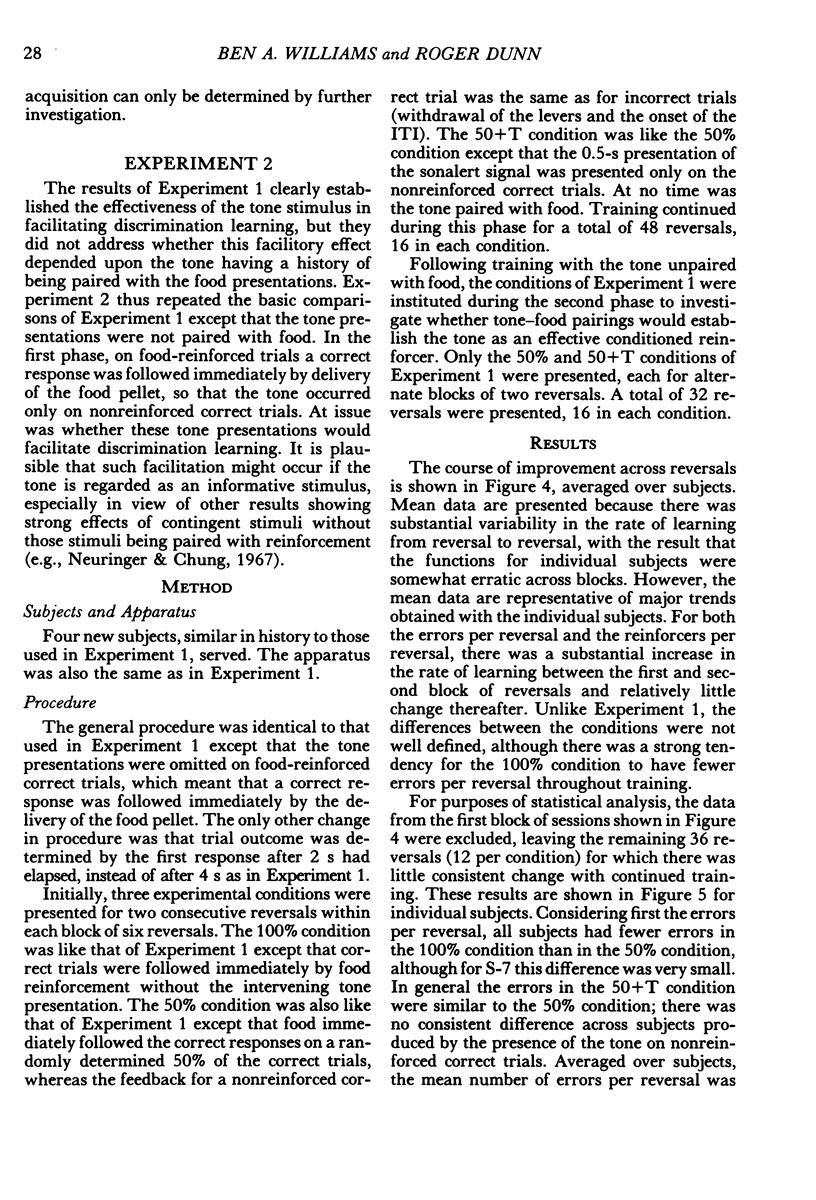

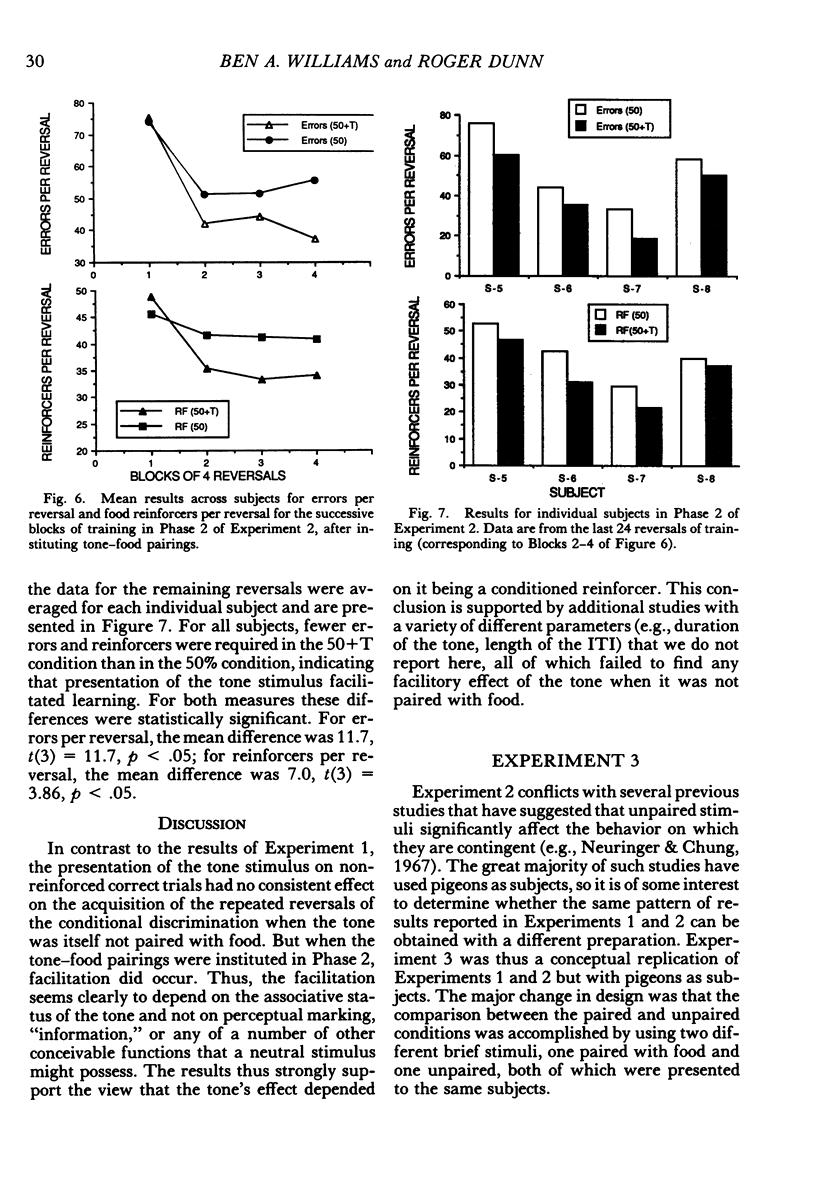
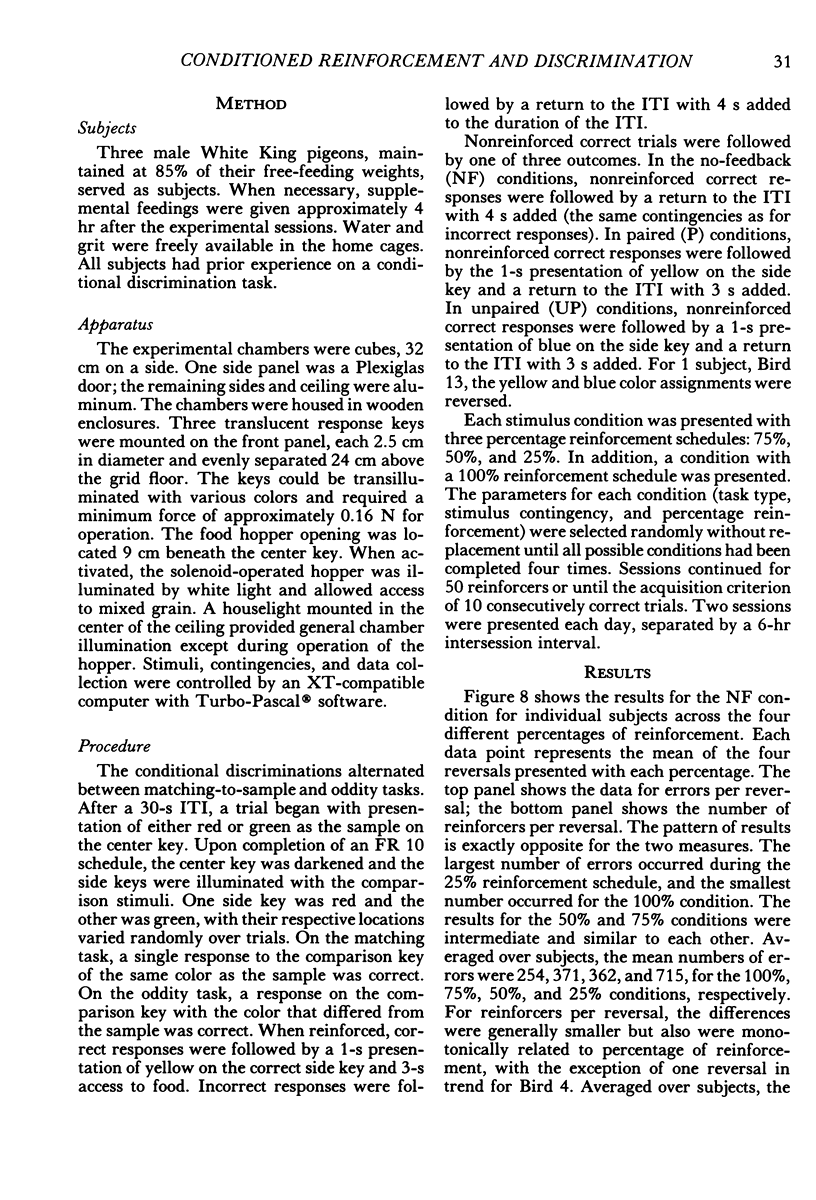
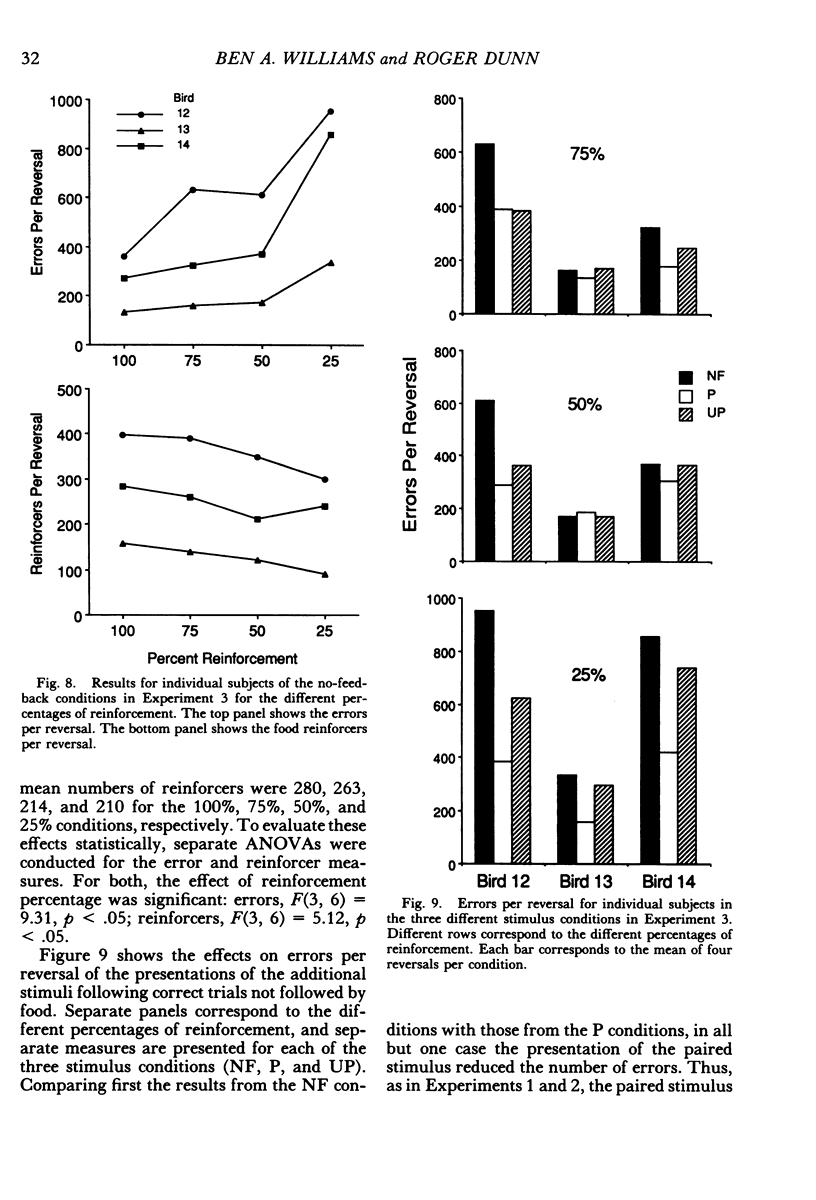



Selected References
These references are in PubMed. This may not be the complete list of references from this article.
- Baum W. M. The correlation-based law of effect. J Exp Anal Behav. 1973 Jul;20(1):137–153. doi: 10.1901/jeab.1973.20-137. [DOI] [PMC free article] [PubMed] [Google Scholar]
- Clark H. B., Sherman J. A. Effects of a conditioned reinforcer upon accuracy of match-to-sample behavior in pigeons. J Exp Anal Behav. 1970 May;13(3):375–384. doi: 10.1901/jeab.1970.13-375. [DOI] [PMC free article] [PubMed] [Google Scholar]
- Cohen S. L., Calisto G., Lentz B. E. Separating the reinforcing and discriminative properties of brief-stimulus presentations in second-order schedules. J Exp Anal Behav. 1979 Sep;32(2):149–156. doi: 10.1901/jeab.1979.32-149. [DOI] [PMC free article] [PubMed] [Google Scholar]
- Dunn R., Williams B., Royalty P. Devaluation of stimuli contingent on choice: evidence for conditioned reinforcement. J Exp Anal Behav. 1987 Jul;48(1):117–131. doi: 10.1901/jeab.1987.48-117. [DOI] [PMC free article] [PubMed] [Google Scholar]
- Eckerman C. O. Probability of reinforcement and the development of stimulus control. J Exp Anal Behav. 1969 Jul;12(4):551–559. doi: 10.1901/jeab.1969.12-551. [DOI] [PMC free article] [PubMed] [Google Scholar]
- Fujita K. Effects of ratio reinforcement schedules on discrimination performance by Japanese monkeys. J Exp Anal Behav. 1985 Mar;43(2):225–234. doi: 10.1901/jeab.1985.43-225. [DOI] [PMC free article] [PubMed] [Google Scholar]
- Hursh S. R. The conditioned reinforcement of repeated acquisition. J Exp Anal Behav. 1977 Mar;27(2):315–326. doi: 10.1901/jeab.1977.27-315. [DOI] [PMC free article] [PubMed] [Google Scholar]
- Neuringer A. J., Chung S. H. Quasi-reinforcement: control of responding by a percentage-reinforcement schedule. J Exp Anal Behav. 1967 Jan;10(1):45–54. doi: 10.1901/jeab.1967.10-45. [DOI] [PMC free article] [PubMed] [Google Scholar]
- Nevin J. A., Mandell C. Conditioned reinforcement and choice. J Exp Anal Behav. 1978 Jan;29(1):135–148. doi: 10.1901/jeab.1978.29-135. [DOI] [PMC free article] [PubMed] [Google Scholar]
- Royalty P., Williams B. A., Fantino E. Effects of delayed conditioned reinforcement in chain schedules. J Exp Anal Behav. 1987 Jan;47(1):41–56. doi: 10.1901/jeab.1987.47-41. [DOI] [PMC free article] [PubMed] [Google Scholar]
- Stubbs D. A., Vautin S. J., Reid H. M., Delehanty D. L. Discriminative functions of schedule stimuli and memory: a combination of schedule and choice procedures. J Exp Anal Behav. 1978 Mar;29(2):167–180. doi: 10.1901/jeab.1978.29-167. [DOI] [PMC free article] [PubMed] [Google Scholar]
- Thomas J. R. Matching-to-sample accuracy on fixed-ratio schedules. J Exp Anal Behav. 1979 Sep;32(2):183–189. doi: 10.1901/jeab.1979.32-183. [DOI] [PMC free article] [PubMed] [Google Scholar]


